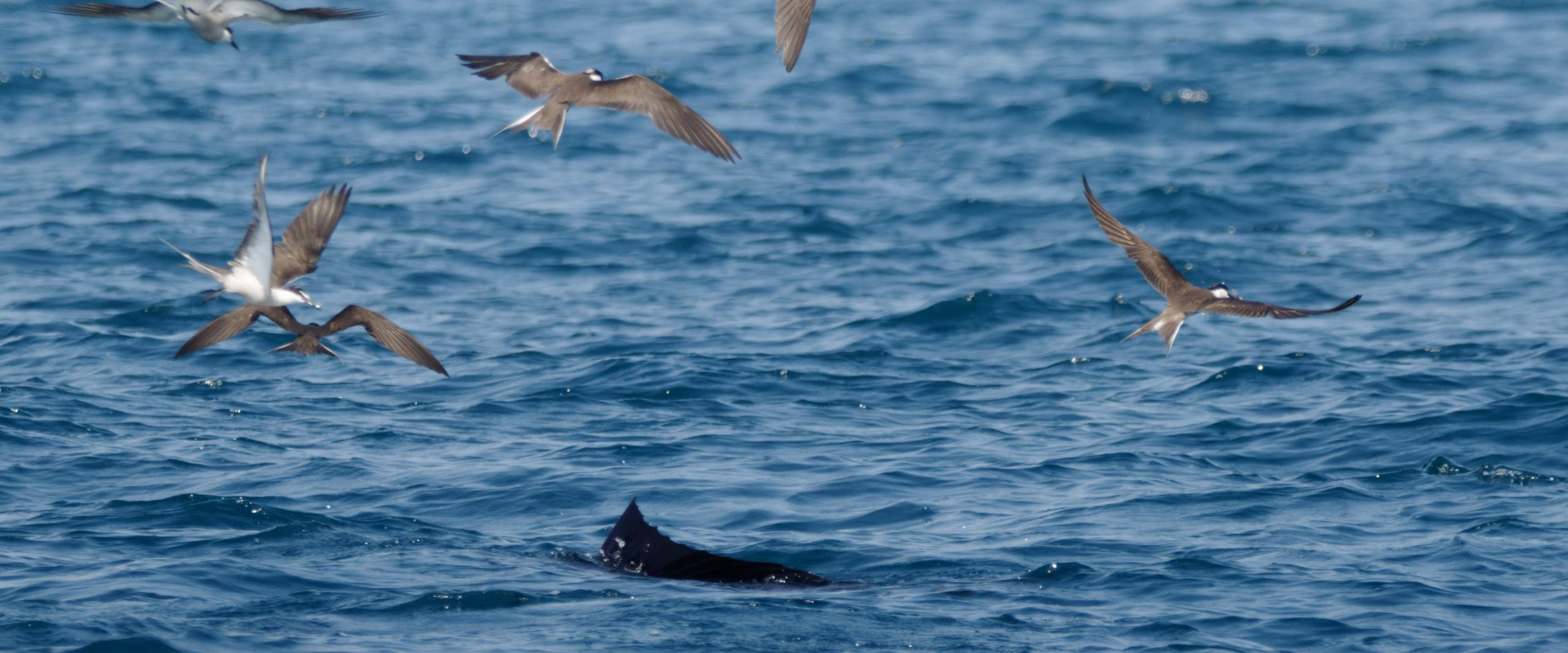Sailfish help seabirds during joint hunts, SCIoI researchers show
The open ocean is home to the largest predator aggregations on the planet. Large predators under the water’s surface such as whales, tuna, sea lions and billfish, but also seabirds above the water level can be frequently observed to hunt together. Whether they help or hinder each other, however, is poorly understood to this day. Scientists from the Cluster of Excellence “Science of Intelligence“ (SCIoI), the Humboldt-Universität zu Berlin and the Leibniz Institute of Freshwater Ecology and Inland Fisheries (IGB) provide new insights into this behavior, which now shows that seabirds make catching fish easier for themselves by teaming up with sailfish. The key to this, they suggest, is the organizational structure of the prey group.
Drones on the open ocean
The research team from SCIoI has been investigating the group behavior of billfish, such as striped marlin and sailfish, and their schools of prey for some time, as these complex animal interactions can be used to study many basic principles of collective intelligence, which is one of the Cluster’s main objective. While out in the field in Malaysia, trying to film sailfish using high-resolution drones, the researchers found that seabirds were always around and could actually be used to find the sailfish.
When analyzing the drone videos, they noticed something curious: the birds seemed to swoop down and attack, right after a sailfish had just attacked the prey group. Using the top-down view of the drone they could compare the area taken up by the prey school over time. Independently of the number of fish in the school, tightly organized schools can provide better defence for the prey fish, than large, scattered ones can, where there are large distances between the individuals. The analysis of 32 attacks by both predators confirmed that sailfish break down the cohesion of the prey group, sometimes increasing the area taken up by the fish school by up to 20 times, and that seabirds perform their attack when the cohesion is low. By timing their attack to follow the sailfish strike, the seabirds manage to charge at the prey when the school members are scattered and the chance to successfully catch a fish are presumably better.
Friends or Enemies
The relationships between marine predators in the open ocean is often subject to speculation, as solid data sets on attacks and captures by the different hunters are rarely available. Based on the behavioral data, the research team could show that while the sailfish provide a benefit for the seabirds, this is not true the other way around. The presence of the seabirds did not make it easier for the sailfish to capture prey. “The idea that the structural organization of a prey school could facilitate the association between seabirds and underwater predators is not new, but we could actually provide direct evidence for this in the wild. In this case the seabirds are the only party that benefits, but in other cases this might actually lay the ground work for mutualism between hunters” said researcher Max Licht from the Humboldt University of Berlin.
Next, the team wants to investigate other predator pairings such as brown pelicans and mahi mahi, where both predators are potentially able to break down the cohesion enough to create feeding opportunities for the other species.





